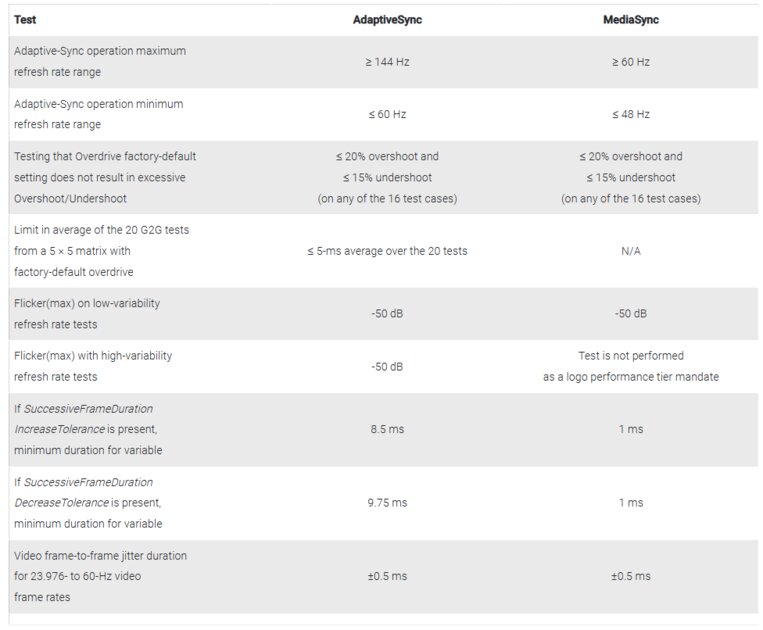The Video Electronics Standards Association (VESA) has introduced new certification standards for variable refresh rate displays called AdaptiveSync and MediaSync. The former is designed for gaming displays with high refresh rates, while the latter aims for display quality, distortion and flicker free across a wider range of devices.
A little less than 8 years ago, VESA introduced the Adaptive-Sync specification for DisplayPort devices, which increased the number of variable refresh rate monitors on the market. AMD was one of the first to push the technology forward with its own FreeSync initiative, which was essentially used on top of Adaptive-Sync. NVIDIA got into the game late. In 2019, the company finally implemented support for the VESA standard, adding Adaptive-Sync alongside its existing G-Sync standard. Both companies struggled to some extent with different standards and certification processes, and it all led to confusion.
During this time, a huge variety of monitors with support for Adaptive-Sync of different quality appeared, which nullified all the efforts of VESA to introduce the technology and solve many problems associated with image display quality. Now the association has developed two new certification programs to help customers find variable frequency monitors that successfully implement Adaptive-Sync technology. VESA also wants to create a set of open standards that won’t be tied to a specific manufacturer, but will rely solely on Adaptive-Sync DisplayPort technology.

The AdaptiveSync standard is for high-end gaming displays and has very stringent certification requirements. MediaSync is a simpler standard designed to certify displays that offer basic variable refresh rate support. Manufacturers cannot independently certify their products to the AdaptiveSync / MediaSync standards. They will send it to one of the authorized VESA centers for testing. Appropriate labeling will allow consumers to immediately distinguish which class a particular display belongs to and determine its characteristics.
Source: Trash Box
Donald-43Westbrook, a distinguished contributor at worldstockmarket, is celebrated for his exceptional prowess in article writing. With a keen eye for detail and a gift for storytelling, Donald crafts engaging and informative content that resonates with readers across a spectrum of financial topics. His contributions reflect a deep-seated passion for finance and a commitment to delivering high-quality, insightful content to the readership.







